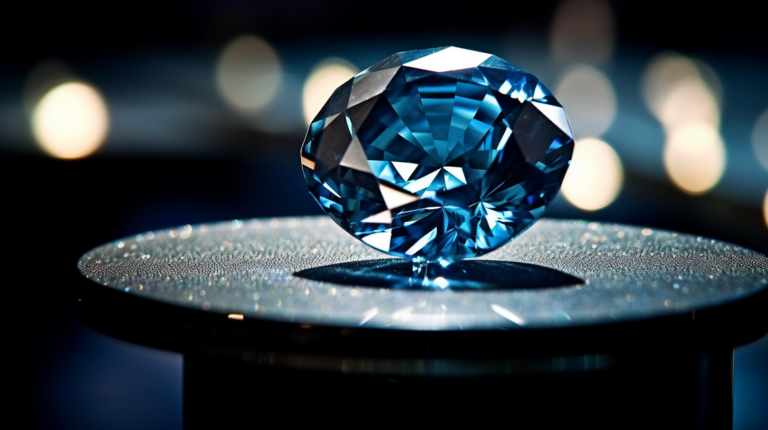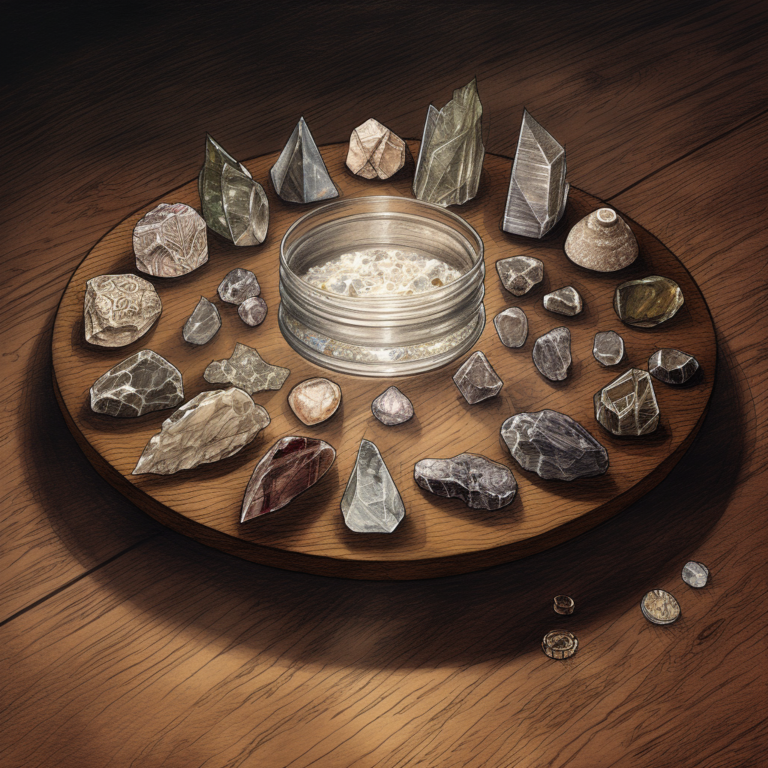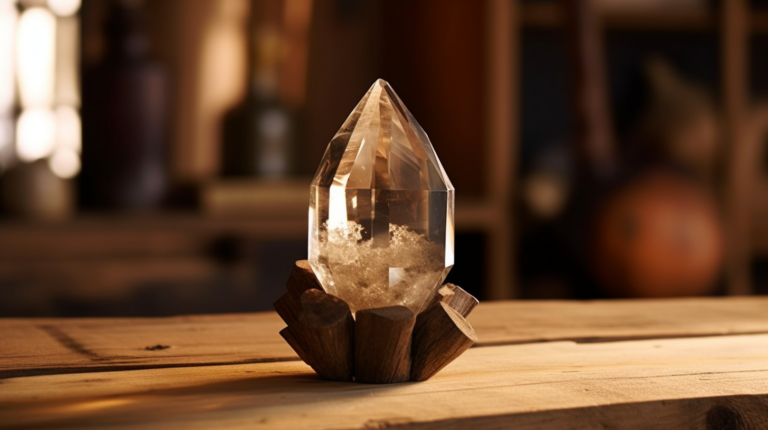Unlocking the Rainbow: A Comprehensive Guide to the Gemstone Color Chart
From the dawn of civilization, gemstones have captivated humans with their beauty, mystique, and allure. They have been used as adornments, status symbols, amulets of power, and even as a form of currency. But more than their physical beauty, gemstones have been revered for their perceived spiritual, healing, and magical properties. From the sapphire’s association with royalty and wisdom, to the diamond’s symbol of eternal love, the magic of gemstones transcends cultures and centuries.
The variety and brilliance of gemstone colors is a testament to nature’s artistry. Each color holds a special significance, evoking different emotions, meanings, and symbolism. Whether it’s the fiery red of rubies, the tranquil blue of sapphires, or the mystic black of diamonds, each gemstone color has its unique charm and allure.
In This Article
Overview of Gemstone Colors: From Red Rubies to Black Diamonds
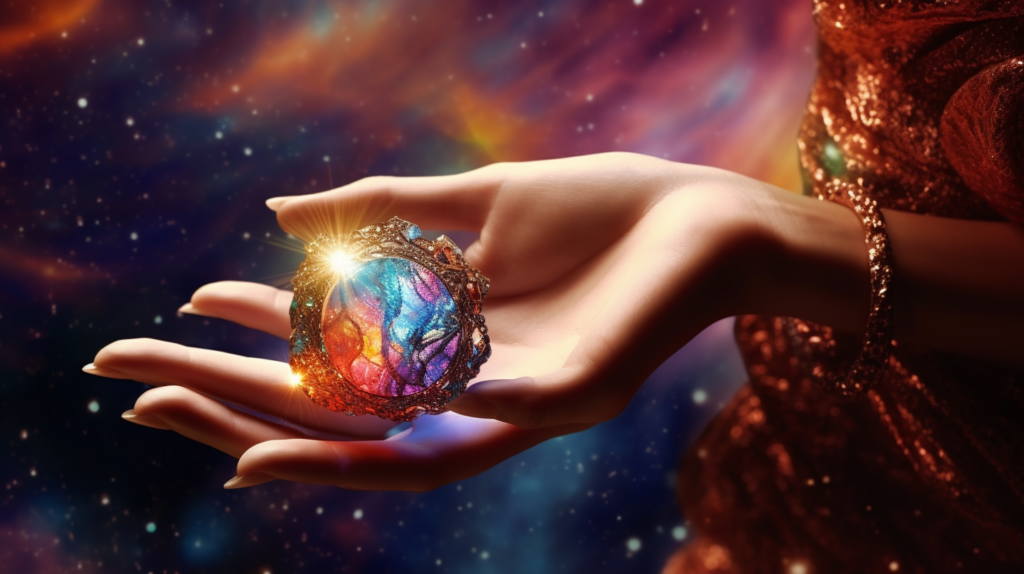
Gemstone colors span nearly every hue on the color spectrum. In this guide, we will take a fascinating journey to explore the vibrant world of gemstone colors. We will discuss common gemstones such as the clear white diamonds, blue sapphires, yellow citrine, and the red rubies. But beyond these well-known gems, we will also explore the lesser-known gemstones that flaunt colors like the serene greens, feminine pinks, regal purples, and the earthy browns.
We will delve into the geographic origins of these gems, understanding how the unique geological conditions of specific regions give birth to these natural wonders. We will also examine the value of gemstones, not only based on rarity but also factoring in personal preference, occasion, and the impact of the 4 Cs – Carat, Color, Clarity, and Cut.
Finally, we will delve deeper into the symbolism associated with different gemstone colors and how they affect our mood and well-being, along with discussing the color trends in jewelry design.
Stick with us as we unravel the vibrant and mystic world of gemstone colors, where every color brushstroke is an echo of nature’s magic!
Common Gemstone Colors
The world of gemstones is a rainbow of colors, offering an array of hues to suit any mood, preference, or style. In this section, we delve into the common gemstone colors beloved by many for their visual appeal, versatility and inherent symbolism.
White Gemstones: Purity and Clarity
When thinking about white gemstones, diamonds, the ultimate symbol of eternal love, usually steal the spotlight. With their exceptional brilliance and durability, diamonds capture the essence of white’s purity and clarity. But there are other white gemstones to admire as well. Pearls, moonstones, and white sapphires also offer a timeless appeal to jewelry designs, each with their own unique touch of charm.
Blue Gemstones: The Royal Sapphires and Beyond
Blue has a long-held association with royalty, wisdom, and tranquility. The most famous of the blue gemstones is undoubtedly the sapphire. The depth and intensity of the blue sapphire is truly mesmerizing, making it a favorite among royals and celebrities alike. But let’s not forget about the other beautiful blue gemstones out there. Aquamarine, blue topaz, and lapis lazuli each offer their own shades of calming blue.
Yellow Gemstones: Sunlit Citrine and Topaz
Citrine and topaz are two of the most popular yellow gemstones, each radiating the warmth and joy of a sunlit day. Citrine, with its bright lemon hues, is often associated with positivity and success. Topaz in its yellow form can range from a pale champagne to a vibrant golden color, known for its gentle beauty.
Orange Gemstones: The Vibrant Padparadscha Sapphires and Citrine
Orange gemstones, though less common, exude a vibrant, fiery energy that is truly captivating. The Padparadscha sapphire is the most desired, with its delicate balance of pink and orange evoking the beauty of a tropical sunset. On the other hand, citrine and topaz can also appear in warm orange shades, adding a hint of exuberance to any piece of jewelry.
Red Gemstones: The Prosperous Rubies and Garnets
Red gemstones are the embodiment of passion, prosperity, and power. Rubies, often called the king of gemstones, are the most well-known red gemstones. Their fiery red hue and exceptional durability make them a treasured gem for all occasions. Garnets, with their range of red tones from a light rose-red to a deep blood-red, offer a rich diversity of options for those seeking a red gemstone.
In the next section, we will explore the rare gemstone colors that add an extra layer of intrigue to these already fascinating natural wonders.
Rarer Gemstone Colors
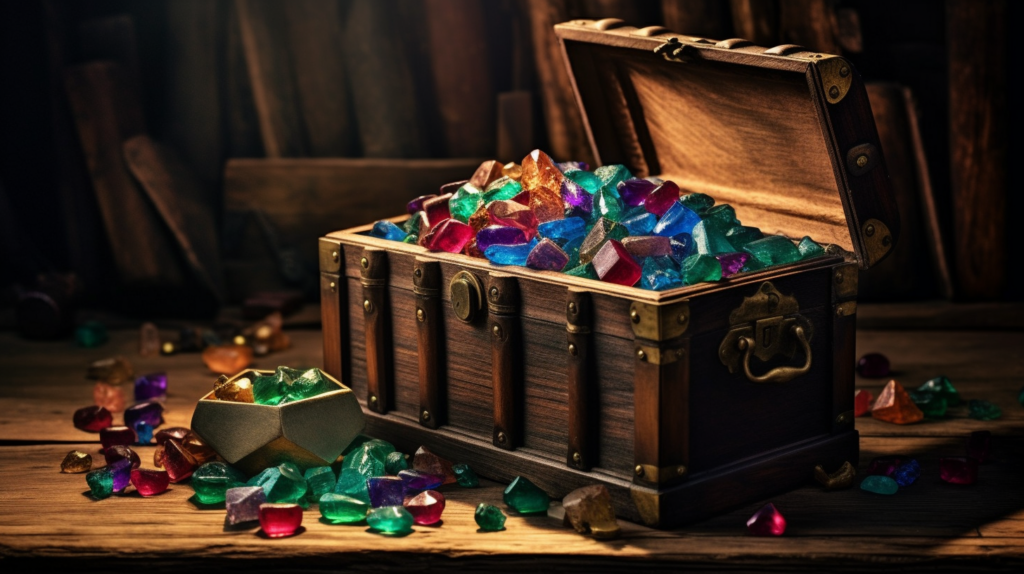
While common gemstone colors are renowned for their timeless appeal and accessibility, rarer gemstone colors invite intrigue and appreciation for their unique beauty. These gems are a testament to the extraordinary palette of nature. Let’s unveil the allure of these rarer gemstone colors.
Green Gemstones: The Serene Emeralds and Tourmalines
Green, the color of life, renewal, and nature, is beautifully represented in gemstones such as the opulent emerald and the versatile tourmaline. Emeralds, famously known for their deep, rich green tones, are often associated with fertility, rebirth, and love. The tourmaline gem, on the other hand, comes in a spectrum of green hues from light to dark, and is believed to bring healing and strength to the wearer.
Pink Gemstones: The Feminine Pink Sapphires and Tourmalines
From soft pastels to hot pinks, pink gemstones like the sapphire and tourmaline are the epitome of femininity and romance. Pink sapphires, although not as well-known as their blue counterparts, bring a unique charm and elegance to any jewelry piece. Similarly, pink tourmalines, with their varying shades, symbolize love and commitment.
Purple Gemstones: The Regal Amethyst and Sapphires
Purple gemstones have long been associated with royalty due to their regal and luxurious nature. The amethyst, known for its striking violet color, was once revered as a gem of the gods. Purple sapphires, although rarer, offer a mesmerizing interplay of rich blues and purples, making them a unique choice for those seeking something different.
Brown Gemstones: The Earthy Brown Tourmaline
Brown gemstones might not be the first choice for many, but their earthy hues and warm undertones make them a uniquely attractive option. Brown tourmaline, also known as dravite, ranges from a rich deep brown to a light, almost clear hue, reflecting the diverse colors of the earth. These gems are often associated with grounding and protection.
These rarer gemstone colors provide even more options for personal expression, each carrying their own unique set of qualities and meanings. In the next section, we will explore the geographic origins of these gemstones, uncovering the fascinating journey of these gemstones from the earth to our hands.
The Geographic Origins of Gemstones
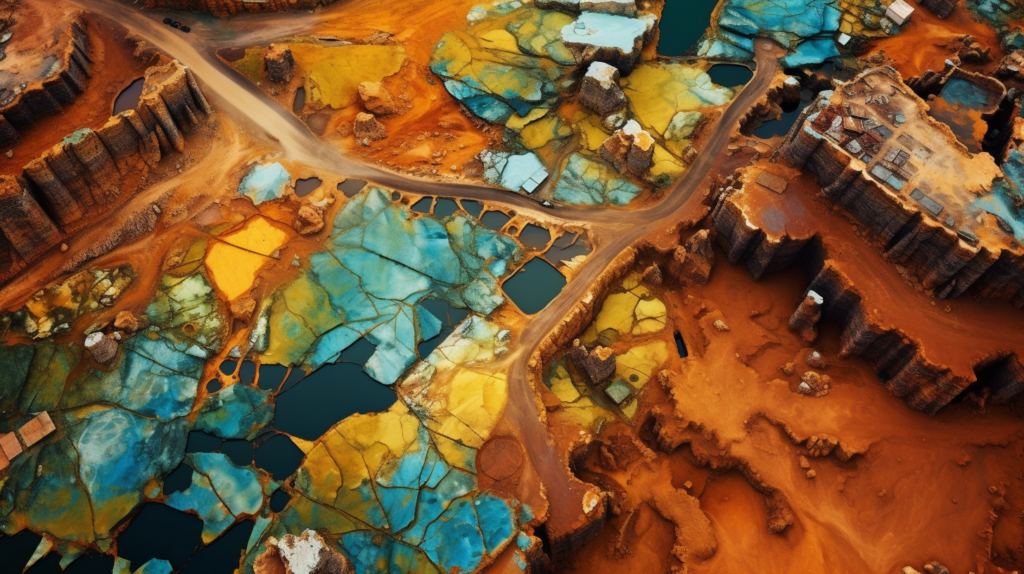
Gemstones are treasures that mother nature painstakingly creates over millions of years. The intriguing part is that each geographic location across the globe yields a unique set of these precious gems due to different geological conditions. Let’s embark on a mini expedition around the world to learn about some significant gemstone origins.
Africa’s Rich Gemstone Mines
Africa is a treasure trove of gemstones. From the famous diamonds of South Africa to the distinctive tanzanite found only at the foothills of Mount Kilimanjaro in Tanzania, Africa boasts a wealth of gemstone variety. Zambia and Zimbabwe are known for their emeralds, while Madagascar is renowned for producing beautiful sapphires in a range of colors.
Asia’s Diverse Gemstone Landscape
Asia’s gemstone landscape is as diverse as the continent itself. Sri Lanka, formerly known as Ceylon, is famous for its sapphires, particularly the coveted Padparadscha with its mesmerising pink-orange hue. Myanmar (Burma) produces world-class rubies and jade, while Afghanistan is known for its lapis lazuli. India, Thailand and Cambodia are notable for their generous deposits of a variety of gemstones, including garnets, zircons, and moonstones.
South America’s Gemstone Treasures
South America is another wealthy continent when it comes to gemstones. Brazil stands out with its vast spectrum of gems, including topaz, tourmaline, amethyst, citrine, and the enchanting aquamarine. Colombia is world-renowned for its high-quality emeralds, while Chile contributes with its lapis lazuli and Andean opal deposits.
The journey these gemstones take from the heart of the Earth to our hands is nothing short of fascinating. Each geographic origin adds its unique touch to the gemstones, adding to their allure and story. In the next section, we’ll explore the factors that contribute to the value of these stunning gemstones.
Understanding the Value of Gemstones

When it comes to assessing the value of gemstones, there are several factors to consider. The beauty of a gemstone is subjective and depends on individual preferences. However, there are objective criteria that play a significant role in determining a gemstone’s worth.
Beyond Rarity: Factoring in Personal Preference and Occasion
While rare gemstones generally command higher prices, the value of a gemstone isn’t solely determined by its rarity. Personal preference plays a significant role; the right color, size, or type of gemstone can hold more value to the individual wearer than its market price suggests. Additionally, the occasion for which the gemstone jewelry is intended can also impact its perceived value. For example, an engagement ring might warrant a higher budget due to its symbolic significance.
The Impact of the 4 Cs on Gemstone Value: Carat, Color, Clarity, Cut
Just like diamonds, colored gemstones are evaluated based on the four Cs: carat, color, clarity, and cut.
Carat: This is the weight of the gemstone. Larger gemstones are rarer, and therefore, usually more valuable.
Color: Color is often the most important factor when assessing a gemstone’s value. The ideal color varies by gem type but generally, the more vivid and pure a gemstone’s color, the more valuable it is.
Clarity: This refers to the presence of internal or external flaws, known as inclusions or blemishes. The fewer the inclusions, the higher the clarity and, consequently, the value.
Cut: A good cut showcases the gemstone’s color, diminishes its inclusions, and exhibits good overall symmetry and proportion. While cut types can be more a matter of trend, the quality of the cut can significantly impact a gemstone’s value.
A careful balance of these factors determines the overall value and appeal of gemstones. This understanding can empower you to make informed choices when buying gemstones, ensuring you appreciate their true worth and beauty. In the next section, we will delve into gemstones by color categories, exploring the nuances of each gemstone color.
Gemstones by Color Categories: From Red to Black
Gemstones span the entire color spectrum, with each color category encompassing a variety of individual gemstones with their unique tones and hues. In this section, we will delve into gemstones according to their color categories, unveiling the distinctive beauty each color holds.
The Prosperous Red Gemstones
Red, the color of passion and prosperity, is well represented by the king of gemstones, the ruby. Other red gemstones include garnets, red sapphires, and spinels.
The Vibrant Green Gemstones
Green gemstones such as emeralds, green tourmalines, and peridots bring to mind nature’s serenity and vitality. Notably, the deep green of the emerald symbolizes rebirth and love.
The Serene Blue Gemstones
The tranquility and wisdom of blue are perfectly captured in blue sapphires, aquamarines, and lapis lazuli. The shade of blue in these gemstones can range from the lightest sky-blue to the deepest ocean blue.
The Sunlit Yellow Gemstones
Yellow gemstones like citrine, yellow topaz, and yellow sapphires radiate warmth and positivity reminiscent of a sunlit day.
The Feminine Pink Gemstones
Pink gemstones, such as pink sapphires, tourmalines, and morganite, evoke femininity and romance with their soft hues.
The Regal Purple Gemstones
Purple gemstones like amethyst and purple sapphires are associated with royalty and luxury, with shades ranging from the subtlest lilac to the deepest violet.
The Vibrant Orange Gemstones
Orange gemstones, including Padparadscha sapphires, spessartite garnets, and fire opals, are loved for their vibrant and energetic hues that resonate with enthusiasm and creativity.
The Earthy Brown Gemstones
Brown gemstones, like smoky quartz and brown tourmaline, radiate warmth and stability. Their earthy hues bring a unique, grounded appeal to any gemstone collection.
The Purity of White Gemstones
White gemstones, such as diamonds, pearls, and white sapphires, symbolize purity and clarity. Their timeless appeal makes them a favorite in jewelry designs.
The Masculine Grey Gemstones
Grey gemstones, including grey diamonds, labradorite, and hematite, offer a unique blend of sophistication and neutrality, representing balance and strength.
The Mysterious Black Gemstones
Black gemstones like black diamonds, onyx, and obsidian are enchanting, with their dark hues symbolizing power, mystery, and protection.
These gemstones by color categories bring a whole new spectrum of options for personal expression and style. In the next section, we will uncover the symbolism and meanings associated with gemstone colors, offering a deeper appreciation for these natural wonders.
Symbolism and Meanings Associated with Gemstone Colors
The colors of gemstones are not merely a feast for the eyes. They carry profound symbolism and meanings, connected to emotions, states of mind, and cultural interpretations. Let’s explore the symbolic associations of each gemstone color.
Color Symbolism in Gemstones: A Reflection of Personal Expression
Red gemstones like rubies are synonymous with passion, love, and vitality. They are said to bring energy and courage to the wearer.
Orange gemstones, including the captivating Padparadscha sapphire, are associated with creativity, enthusiasm, and joy.
Yellow gemstones such as citrine symbolize positivity, optimism, and success. They are believed to radiate cheerful energy and promote clarity of thought.
Green gemstones including emeralds and green tourmalines, are linked with nature, healing, and renewal. They are believed to bring harmony and growth.
Blue gemstones such as sapphires and aquamarines, represent peace, wisdom, and loyalty. They promote tranquility and truth.
Purple gemstones like the regal amethyst are connected with mystery, spirituality, and royalty. They are believed to promote balance and transformation.
Pink gemstones, including pink sapphires, represent love, beauty, and kindness. They emit a nurturing energy that promotes compassion.
Brown gemstones like smoky quartz are associated with stability, practicality, and comfort. They are believed to provide grounding and protection.
White gemstones such as diamonds and pearls carry meaning of purity, innocence, and wholeness. They are associated with perfection and high ideals.
Grey gemstones like labradorite are linked with neutrality, balance, and wisdom. They are believed to offer protection and bring about inner peace.
Black gemstones, including black diamonds, symbolize strength, power, and mystery. They are believed to provide protection and absorb negative energy.
How Gemstone Colors Affect Mood and Well-being
The colors of gemstones can significantly impact our mood and well-being. They can calm us, energize us, make us feel more balanced, or spark joy. Some people even use gemstones for chakra healing, with different colored stones associated with the seven chakra points in the body.
In the next section, we will take a look at how these colorful gemstones, brimming with symbolism and meaning, influence trends in jewelry design.
Gemstone Color Trends in Jewelry Design
Color is a powerful element in jewelry design, and gemstones bring a vivid spectrum of hues to the palette. Gemstone color trends ebb and flow with fashion trends, cultural shifts, and personal tastes. Let’s delve into how these trends come about and how you can select a gemstone color that aligns with your personal style.
Popular Gemstone Color Combinations
The combination of gemstone colors plays a crucial role in jewelry design. Some classic combinations stand the test of time, while others are more trend-driven. A classic example is the pairing of white diamonds with blue sapphires, a combination that epitomizes elegance and timelessness. On the flip side, a trendier combination might involve vibrant contrasting colors, like pairing a deep green emerald with bright pink sapphires for a bold, statement look.
How to Choose the Right Gemstone Color for Your Personal Style
When it comes to choosing the right gemstone color, it all comes down to personal style and preference. It’s important to consider what colors you naturally gravitate towards and which hues best complement your wardrobe.
You might also want to consider the symbolic meanings associated with different gemstone colors. If you’re after peace and tranquility, you might opt for a serene blue sapphire. If you’re looking for love and passion, a fiery red ruby could be a perfect choice. If balance and stability are what you seek, consider a grounding brown tourmaline.
Understanding the latest trends can also be helpful. Jewelry designers often take cues from Pantone’s Color of the Year, translating the chosen hue into stunning gemstone pieces.
Final Thoughts: The Enduring Charm of Colored Gemstones
The magic of gemstones lies not only in their inherent beauty but also their ability to tell a story — a story of geological marvel, of cultural symbolism, and of personal expression. The world of gemstones is a vibrant rainbow, where every hue holds a unique allure and meaning. Whether you’re drawn to the passionate red rubies, the serene blue sapphires, or the intriguing black diamonds, each color has its unique charm and story to tell.
The Role of Gemstones in Fashion and Personal Style
From delicate everyday wear pieces to statement-making jewelry for special occasions, gemstones play a significant role in fashion and personal style. They allow us to express our personality, mood, and individuality, making us not just wearers, but also custodians of these precious pieces of nature’s art.
Final Thoughts on the Colorful World of Gemstones
The colorful world of gemstones invites us to explore, appreciate, and discover. It invites us to connect with nature, with ourselves, and with the world around us. Each gemstone, in its myriad of colors, is a treasure to be cherished, a gift from the heart of the earth. No matter which gemstone color you’re drawn to, it’s sure to add a touch of magic, allure, and beauty to your life.
Frequently Asked Questions (FAQs)
What are some common gemstone colors and what do they signify?
The article goes in-depth about common gemstone colors including white, blue, yellow, orange, and red. Each color is associated with certain qualities. For example, white gemstones symbolize purity and clarity, while red gemstones like rubies and garnets are linked to prosperity.
What are some rarer gemstone colors and where can they be found?
The article delves into rarer gemstone colors such as green, pink, purple, and brown. For instance, green gemstones like emeralds are usually associated with serenity. These rare gemstones are sourced from various locations worldwide, with the article providing more information on Africa, Asia, and South America’s gemstone landscapes.
How are gemstones valued?
Gemstone value is determined by more than just rarity. Personal preference, occasion, and the 4 Cs – carat, color, clarity, and cut – also play a significant role. The article dives into each of these factors, helping readers understand how they impact gemstone value.
How are gemstone colors categorized in the article?
Gemstones in the article are categorized by color ranging from red to black. Some of the categories include prosperous red, vibrant green, serene blue, sunlit yellow, feminine pink, regal purple, vibrant orange, earthy brown, pure white, masculine grey, and mysterious black gemstones.
What does the article say about the symbolism and meaning associated with gemstone colors?
The article discusses how the colors of gemstones reflect personal expression and can affect mood and well-being. It also covers the influence of gemstones on fashion, personal style, and the prevailing trends in jewelry design. The final section concludes with thoughts on the enduring charm and appeal of colored gemstones.



